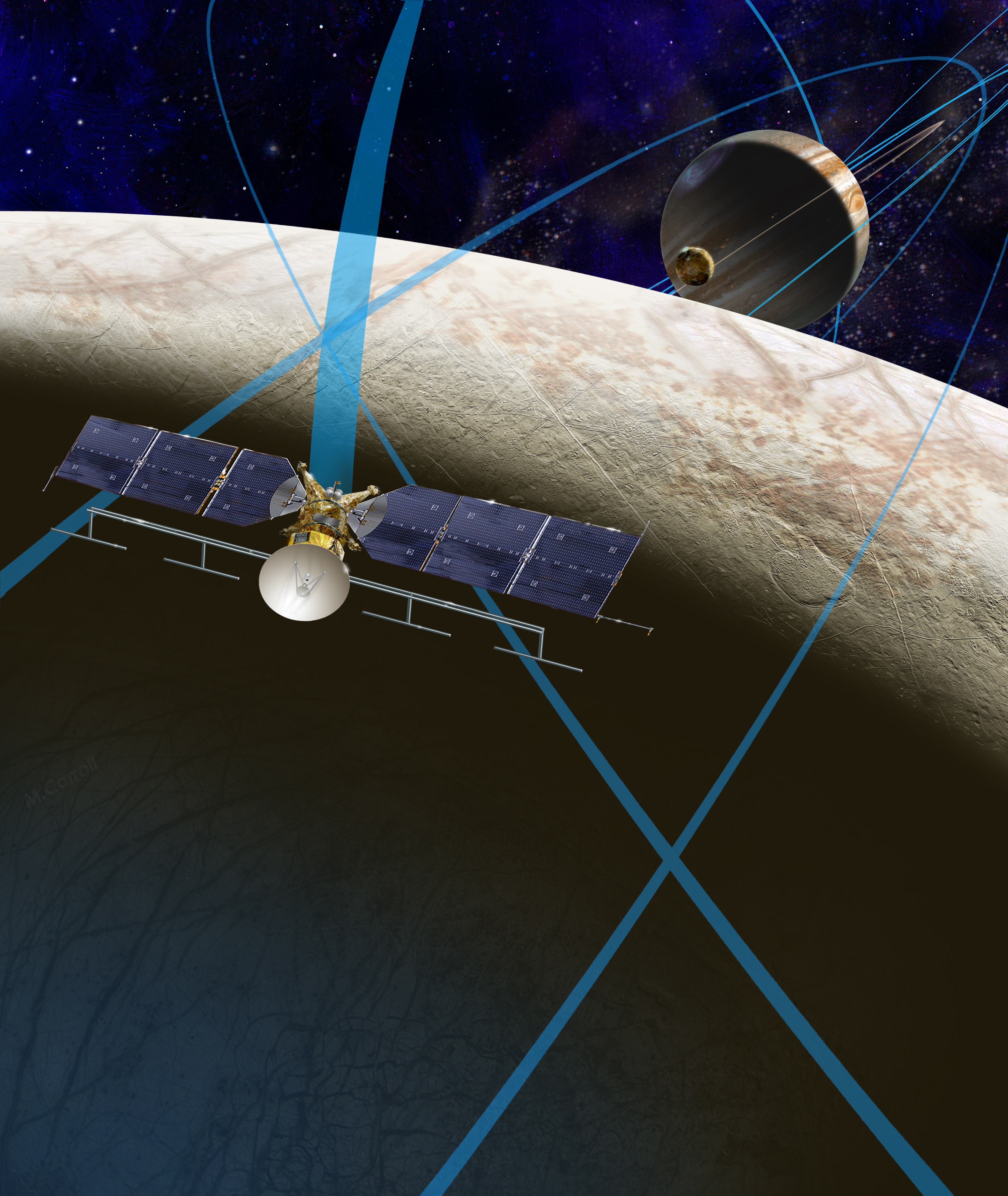Big Space Challenges Could Put NASA's Europa Missions on Ice
NASA has spent years working on two potential missions to crack the secrets of Jupiter's icy moon Europa — and both of those projects are in trouble, according to an internal investigation released today (May 29).
Europa Clipper is currently scheduled to launch in 2023 to orbit the moon for more than three years, studying its icy shell and suspected internal ocean, among other features. Europa Lander would follow in its wake and touch down on the ice in order to better investigate the possibility of life. But according to a nine-month investigation conducted by the NASA Office of Inspector General, both missions are facing a host of serious issues as their teams attempt to balance the needs of NASA and Congress.
"Our audit found that despite robust early-stage funding, NASA's aggressive development schedule, a stringent conflict of interest process during instrument selection, an insufficient evaluation of cost and schedule estimates, and technical workforce shortages have increased instrument integration challenges and development risks for the Clipper mission," John Schulz, a management analyst at the Office of Inspector General, said in a video released with the report.
Related: Photos: Europa, Mysterious Icy Moon of Jupiter

The report highlighted that since 2013, Congress has provided more than $2 billion for the pair of Europa missions. The Clipper mission alone is expected to cost at least $2.8 billion, according to the report.
Every year of that period, the missions' funding has exceeded NASA's budget request. But with all that money has come a lot of strings. First, Congress has ordered NASA to launch both missions on the agency's SLS rocket, which is still in development. Congress also set specific launch targets — currently 2023 for Europa Clipper and 2025 for Europa Lander.
Those two directives may be contradictory. Experts were already worried about the rocket's development; these concerns aren't just a problem for Europa, they also could affect projects like NASA's plans to land astronauts on the moon by 2024.
Get the Space.com Newsletter
Breaking space news, the latest updates on rocket launches, skywatching events and more!
But for Europa specifically, the first flight version of the SLS definitely won't be able to do the job for Europa Lander, and it's not clear yet whether it can successfully launch Europa Clipper, the investigation found. Clipper may need, and Lander will definitely need, a more advanced version of the rocket aiming to fly in 2024 but also predicted to slip. NASA also has not yet ordered a vital part of the SLS that the investigation found requires 52 months to produce — which it should have done in September to be ready in time for a summer 2023 launch.
Because of these SLS problems, NASA's budget request released earlier this year also raises the possibility of launching on a commercial vehicle.
The Clipper team has attempted to work around this problem by still considering the possibility that they'll be switched to ULA's Delta IV Heavy rocket or SpaceX's Falcon Heavy rocket, both of which are already flying. But the continuing uncertainty "creates added risks and uncertainties for an already challenging project," the investigation found.
Another challenge the investigation found is that the Clipper mission is struggling to manage its staffing. The mission is run out of NASA's Jet Propulsion Laboratory (JPL) in California. But as of December, about 10% of Clipper's JPL staff roles were vacant, the investigation found, in part because the center is running four other key NASA projects, including Mars 2020, and keeps having to shuffle staff members between the neediest missions.
The investigation also found that Clipper suffered from an instrument-selection process that tried to be too wary of conflicts of interest. Clipper team members with perceived conflicts of interest — but also vital knowledge about the mission — were either cut out of the instrument-selection process or given insufficient time to review insufficient information, according to the investigation.
(In March, NASA announced that it was eliminating a planned instrument called ICEMAG, which was designed to measure the magnetic field around the moon, replacing it with a simpler version. The investigation did not explicitly link that decision to the instrument-selection issues it identified.)
The report found similar issues plaguing the Europa Lander mission as well, although that project is in a more preliminary stage and NASA has not yet formally committed to launching it. The investigation also raised concerns that by scheduling the Lander to launch so soon after Clipper, it won't be able to fully integrate its predecessor's discoveries into its mission plan.
The investigation team concluded with 10 recommendations it believes can help NASA get the Europa projects back on track and avoid similar issues in the future. Those recommendations include evaluating JPL's overall staffing, rescheduling mission milestones more realistically and making sure mission-related estimates reflect the risks associated with the SLS.
- Europa’s Buried Ocean Could Rise to the Surface (Video)
- Europa Lander May Not Have to Dig Deep to Find Signs of Life
- Wild 'Tunnelbot' Designs Could Crack Secrets of Icy Jupiter Moon Europa
Email Meghan Bartels at mbartels@space.com or follow her @meghanbartels. Follow us on Twitter @Spacedotcom and on Facebook.
Join our Space Forums to keep talking space on the latest missions, night sky and more! And if you have a news tip, correction or comment, let us know at: community@space.com.

Meghan is a senior writer at Space.com and has more than five years' experience as a science journalist based in New York City. She joined Space.com in July 2018, with previous writing published in outlets including Newsweek and Audubon. Meghan earned an MA in science journalism from New York University and a BA in classics from Georgetown University, and in her free time she enjoys reading and visiting museums. Follow her on Twitter at @meghanbartels.









